I had several options of where to stay in and around St Austell, but it didn’t occur to me to consider Travelodge until about 10 days ago. When I went on their website, I found such an amazing deal that it was a no-brainer. Now I’ve stayed in Travelodge in the past and considered them a pale imitation of Premier Inns, often a bit run-down and nothing more than a cheap bed for the night. However, they have changed their game and the hotel at St Austell has an on-site bar and restaurant. The deal was bed, breakfast and a 2 course evening meal for £73.98 which is the cheapest night I’ve had on this trip. When it came to the fine detail there were extras; but even with a couple of bottles of Doom Bar and a pudding the bill was under £90. The bed was comfortable, the room large enough for me and my bike and the shower was powerful. The only weakness was the restaurant service, with not enough staff to cope with demand; so longish waits for food. I had a plate of garlic bread, steak and ale pie with mash and peas and sticky toffee pudding with ice cream and enjoyed all of them.
Breakfast this morning was help yourself to as much as you wanted, and I had my fill. Knowing that I had less then 50 miles to travel to Plymouth I was in no great hurry to start, so it was 0946 when I hit the road, heading back down the Pentewan road to start with, but branching off to Tregorrick which involved an unexpectedly steep climb. Just over 2 miles later I hit Charlestown, a port built for the export of copper and then china clay. The port proved too small for the china clay business which moved just along the coast to Par and the harbour is now owned by a film company who hire out square riggers for tv and film. There are often some substantial ships in port, but not today.
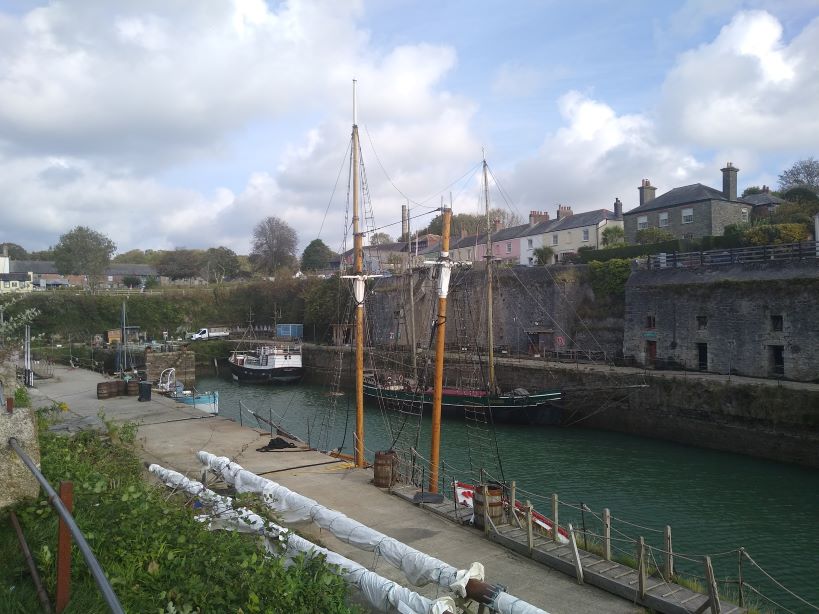
I made my way around Carlyon Bay with its sandy beaches (made largely from waste from the china clay mines, and golf course and did not stop in Par with its massive sheds for drying china clay which is pumped to the site as a slurry before being exported as a dry product. A steep hill with traffic lights at the bottom tested me on the way to Fowey, 10 miles into the journey. I bumbled around the town which I have visited in yachts but never, as far as I can recall, from the land. Narrow streets and all sorts of shops catering to tourists give it an historic feel. I was heading just up-river to Bodinnick to catch the ferry across the river. The ferry has plied its way back and forth 3 times an hour for four hundred years but only in its present form as a car transporter since the 1970s.
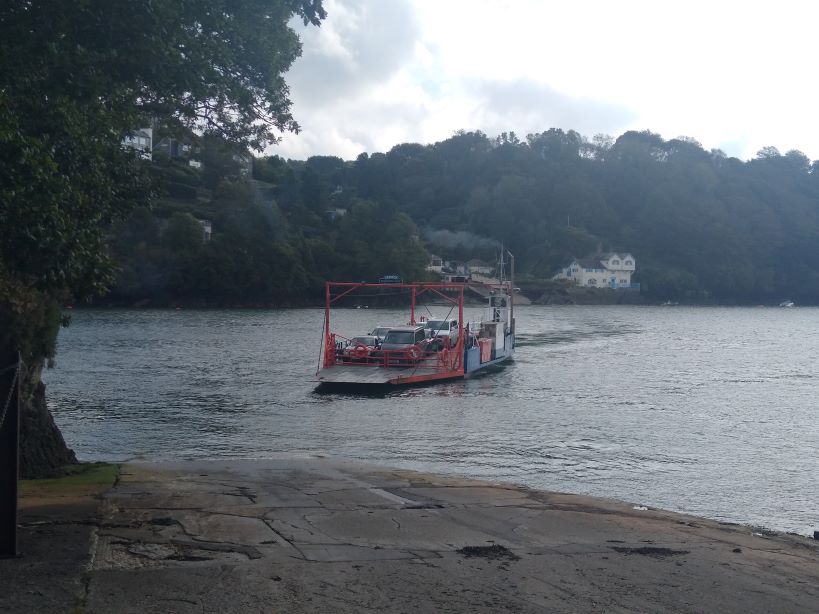
It cost me £3 and there seemed to be plenty of vehicles travelling in either direction to make it a viable business. The alternative is to drive 7 miles upstream to the bridge at Lostwithiel. If you want to get to Looe, as I did, it’s a no-brainer.
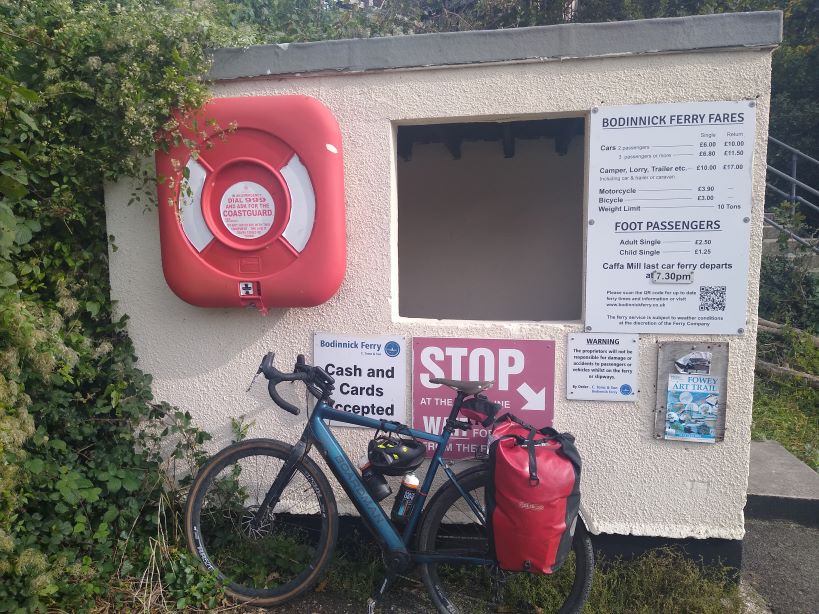
The hill from the Fowey river starts steep but relents and didn’t cause too much sweat. I had considered going down to Polruan, on the other side of the estuary from Fowey but managed to miss a turn and by the time I realised, felt it better to keep going to my next stop, Polperro, which is a very similar village to Fowey, today with throngs of tourists who have to park 750m up the hill and walk down. The village clings to both sides of a steep valley.
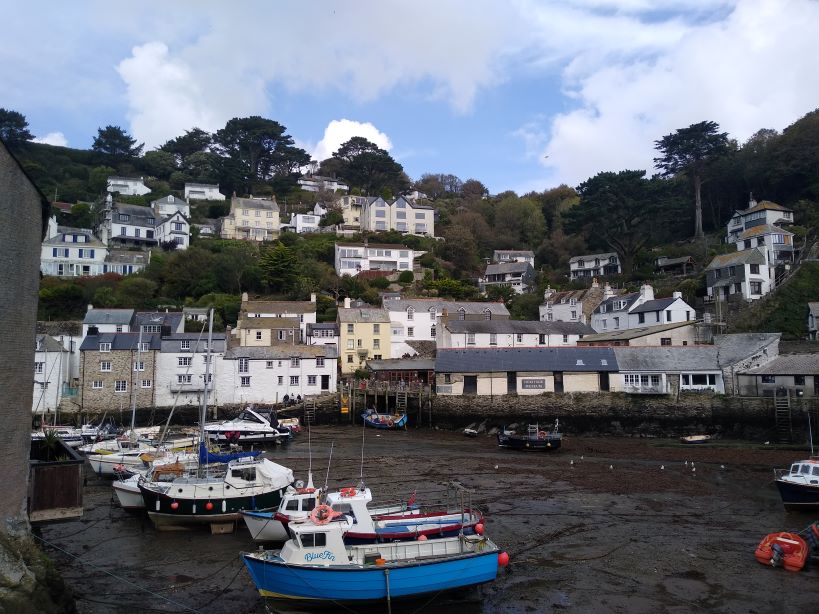
As my proposed exit route up Talland hill looked too steep to contemplate, I made my way up the valley and joined the main road to Looe. I came screeching down the hill into the town, my disc brakes shrieking at the effort.
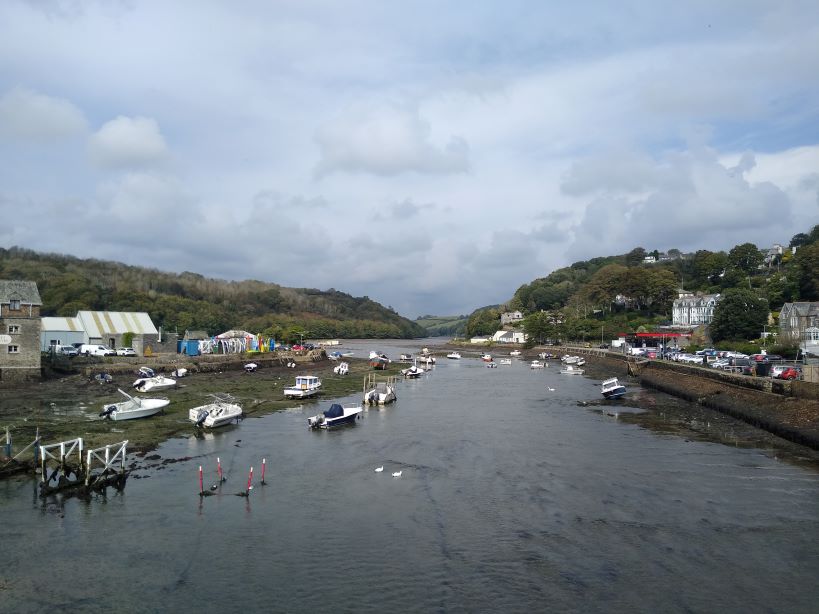
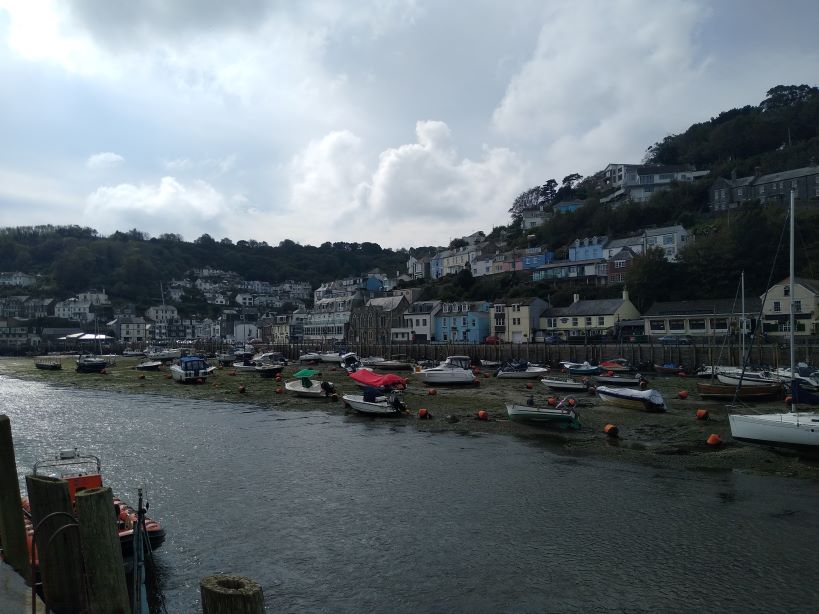
Looe was even busier than Fowey and it was slow progress through the town to the beach
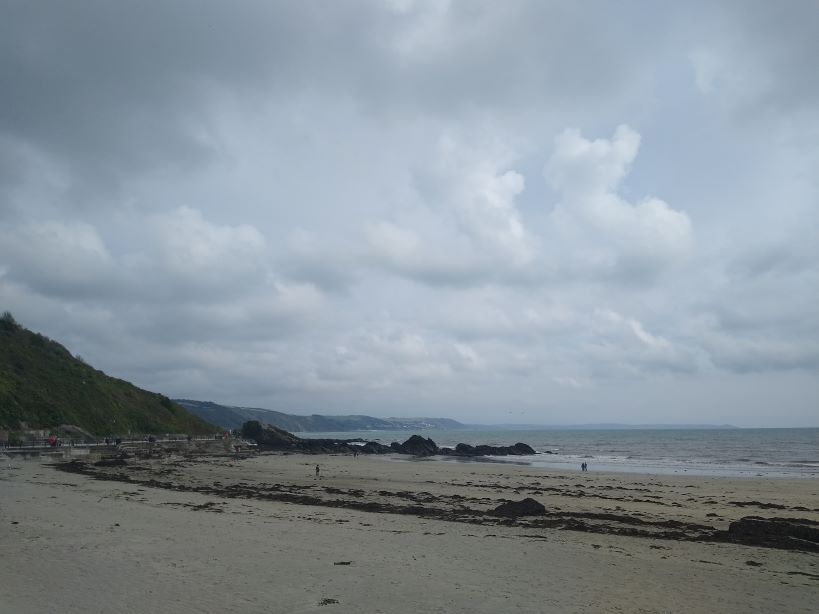
This was where things got interesting. The route I had planned out of Looe showed a road heading steeply up to Plaidy and down to Millendreath Beach. In the event there was no road, only a steep set of steps for about 100metres that I bumped the bike down
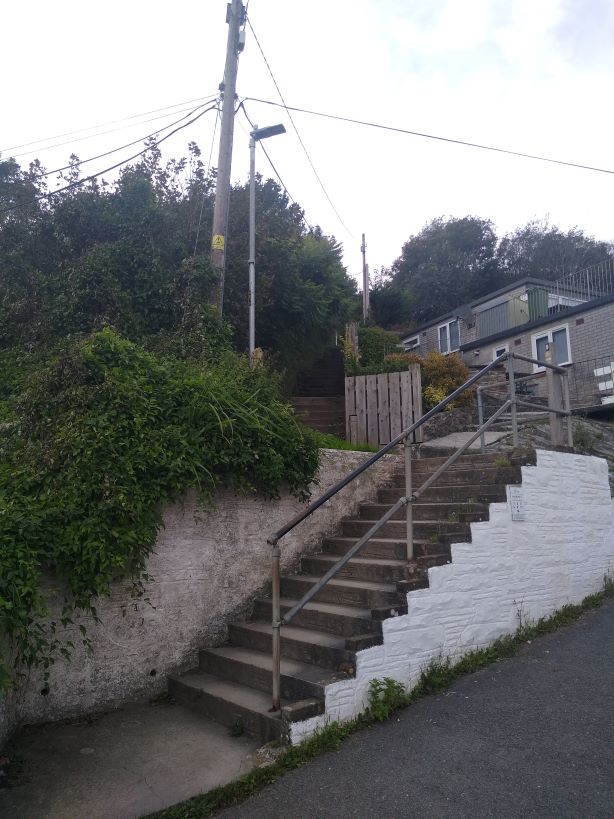
Having reached Millendreath I needed to get out. The road started fine but soon became an unmade track that got worse and worse, forcing me to unload the panniers and carry the bike up yet more steps. A lady walking in the opposite direction told me that I was past the worst and would soon hit tarmac, which indeed I did. However, I had wasted a lot of time and effort before making progress to Seaton

A bit confusing as I associate Seaton with Devon and will visit it in a couple of days time.
The road beyond Seaton was pleasant to ride past Downderry but then back to more of the steep hills that were taking a toll on the battery. Once on top I was riding 3-400 feet above Whitsand Bay, with good, if rather hazy views across to Rame head that guards Plymouth harbour

Finally I headed north and dropped down into Cawsand past military forts that have been converted to residential accommodation.
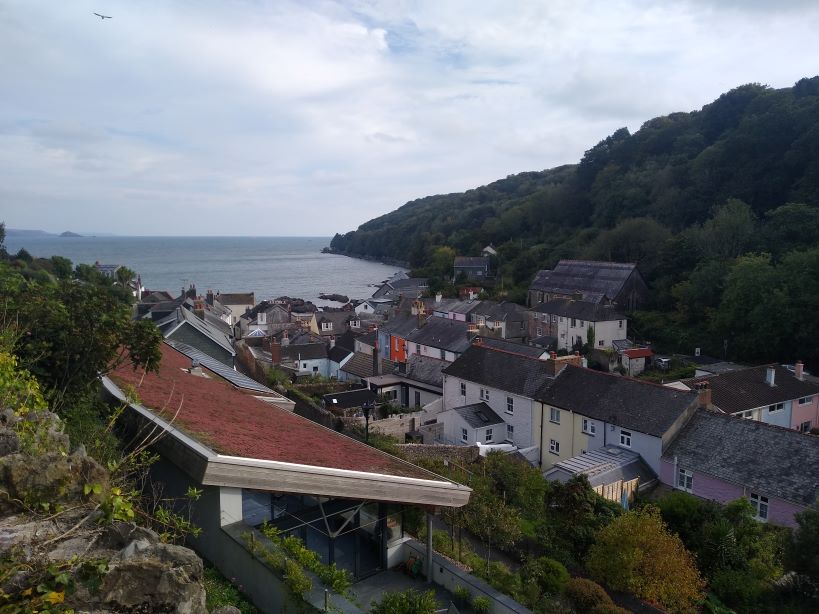
I was rather hoping that the climbing had ended but, once again, took a wrong turn that sent me up steep hills that needed the motor. The battery was seriously low, and I was down to one bar on the read out. I knew that I had some climbing to do in Plymouth, so I was trying to conserve power which meant that I was having to work hard to get up hills without the motor.
Eventually I arrived in Torpoint and got on the ferry which, pleasantly, is free for pedestrians and cyclists.
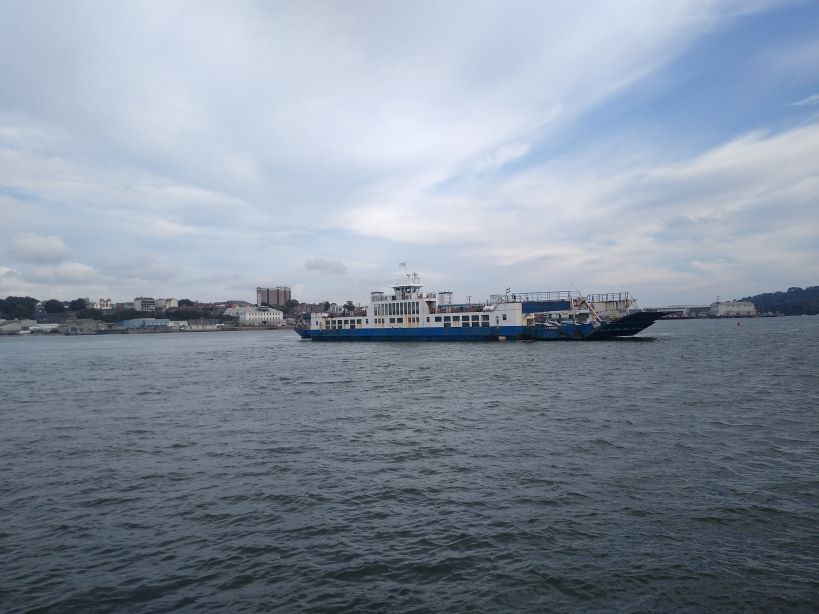
As I feared, the other side saw a steep climb up from the river, but I made it and followed the main road into the city from Devonport to my hotel, the Leonardo, which I reached at about 5.30pm.
